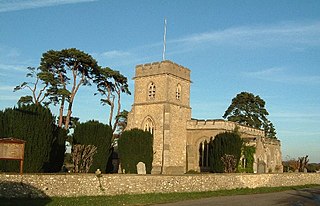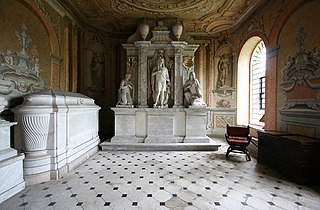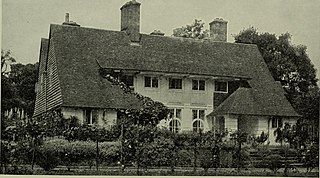
Edward George Earle Lytton Bulwer-Lytton, 1st Baron Lytton, PC was an English writer and politician. He served as a Whig member of Parliament from 1831 to 1841 and a Conservative from 1851 to 1866. He was Secretary of State for the Colonies from June 1858 to June 1859, choosing Richard Clement Moody as founder of British Columbia. He declined the Crown of Greece in 1862 after King Otto abdicated. He was created Baron Lytton of Knebworth in 1866.

Edward Robert Lytton Bulwer-Lytton, 1st Earl of Lytton, was an English statesman, Conservative politician, and poet. He served as Viceroy of India between 1876 and 1880—during his tenure Queen Victoria was proclaimed Empress of India—and as British Ambassador to France from 1887 to 1891.

Earl of Lytton, in the County of Derby, is a title in the Peerage of the United Kingdom. It was created in 1880 for the diplomat and poet Robert Bulwer-Lytton, 2nd Baron Lytton. He was Viceroy of India from 1876 to 1880 and British Ambassador to France from 1887 to 1891. He was made Viscount Knebworth, of Knebworth in the County of Hertford, at the same time he was given the earldom, also in the Peerage of the United Kingdom.

Knebworth is a village and civil parish in the north of Hertfordshire, England, immediately south of Stevenage. The civil parish covers an area between the villages of Datchworth, Woolmer Green, Codicote, Kimpton, Whitwell, St Paul's Walden and Langley, and encompasses the village of Knebworth, the small village of Old Knebworth and Knebworth House.

Knebworth House is an English country house in the parish of Knebworth in Hertfordshire, England. It is a Grade II* listed building. Its gardens are also listed Grade II* on the Register of Historic Parks and Gardens. In its surrounding park is the medieval St. Mary's Church and the Lytton family mausoleum.
A Blighted Life is an 1880 book by Rosina Bulwer Lytton chronicling the events surrounding her incarceration in a Victorian madhouse by her husband Edward Bulwer-Lytton, 1st Baron Lytton and her subsequent release a few weeks later. This was at a time when men could lock up socially inconvenient female relatives in psychiatric institutions.
Hermione Cobbold, Baroness Cobbold, known as Lady Hermione Bulwer-Lytton until 1930, was the British matriarch of Knebworth House and wife of Cameron Fromanteel Cobbold, 1st Baron Cobbold.

Cameron Fromanteel "Kim" Cobbold, 1st Baron Cobbold was a British banker. He served as Governor of the Bank of England from 1949 to 1961 and as Lord Chamberlain from 1963 to 1971.

Victor Alexander George Robert Bulwer-Lytton, 2nd Earl of Lytton,, styled Viscount Knebworth from 1880 to 1891, was a British politician and colonial administrator. He served as Governor of Bengal between 1922 and 1927 and was briefly Acting Viceroy of India in 1926. He headed the Lytton Commission for the League of Nations, in 1931–32, producing the Lytton Report which condemned Japanese aggression against China in Manchuria.

The Honourable Henry Fromanteel Lytton-Cobbold is a British screenwriter. He is the current occupant of Knebworth House in Hertfordshire, England.
David Antony Fromanteel Lytton-Cobbold, 2nd Baron Cobbold, is a British hereditary peer and former member of the House of Lords.

Little Gaddesden is a village and civil parish in the borough of Dacorum, Hertfordshire 3 miles (4.8 km) north of Berkhamsted. As well as Little Gaddesden village, the parish contains the settlements of Ashridge, Hudnall, and part of Ringshall. The total population at the 2011 Census was 1,125. Little Gaddesden is an area of outstanding natural beauty (AONB) and a conservation area protected by the National Trust.
Elizabeth Barbara Bulwer-Lytton was a member of the Lytton family of Knebworth House in Hertfordshire, England.

Lady Constance Georgina Bulwer-Lytton, usually known as Constance Lytton, was an influential British suffragette activist, writer, speaker and campaigner for prison reform, votes for women, and birth control. She used the name Jane Warton to avoid receiving special treatment when imprisoned for suffragist protests.

The Chandos Mausoleum is an early 18th-century English Baroque building by James Gibbs in the care of the Churches Conservation Trust. The mausoleum is attached to the north side of the church of St Lawrence Whitchurch in the London Borough of Harrow, England. The church including the mausoleum is recorded in the National Heritage List for England as a designated Grade I listed building.

Edith Bulwer-Lytton, Countess of Lytton, was a British aristocrat. Wife of Robert Bulwer-Lytton, 1st Earl of Lytton, she was later a court-attendant of Queen Victoria. Her children included the suffragette Lady Constance Bulwer-Lytton.

Homewood is an Arts and Crafts style country house in Knebworth, Hertfordshire, England. Designed and built by architect Edwin Lutyens around 1900–3, using a mixture of vernacular and Neo-Georgian architecture, it is a Grade II* listed building. The house was one of Lutyens' first experiments in the addition of classical features to his previously vernacular style, and the introduction of symmetry into his plans. The gardens, also designed by Lutyens, are Grade II listed in the National Register of Historic Parks and Gardens.

The Church of St Mary and St Thomas is one of two Anglican churches in Knebworth, Hertfordshire, England. The church dates from the twelfth century and is a grade I listed building.

St Martin's Church is an active Anglican church in Knebworth, Hertfordshire, England. The building, which is designated grade II*, was designed by Edwin Lutyens in an Italianate style. It is constructed in brick. The plastered interior features limited use of Portland stone.
Richard John Warburton Lytton was an English landowner and member of the Lytton family. He was the father of Elizabeth Barbara Lytton, and the grandfather of Henry Bulwer, 1st Baron Dalling and Bulwer and Edward Bulwer-Lytton, 1st Baron Lytton.
















